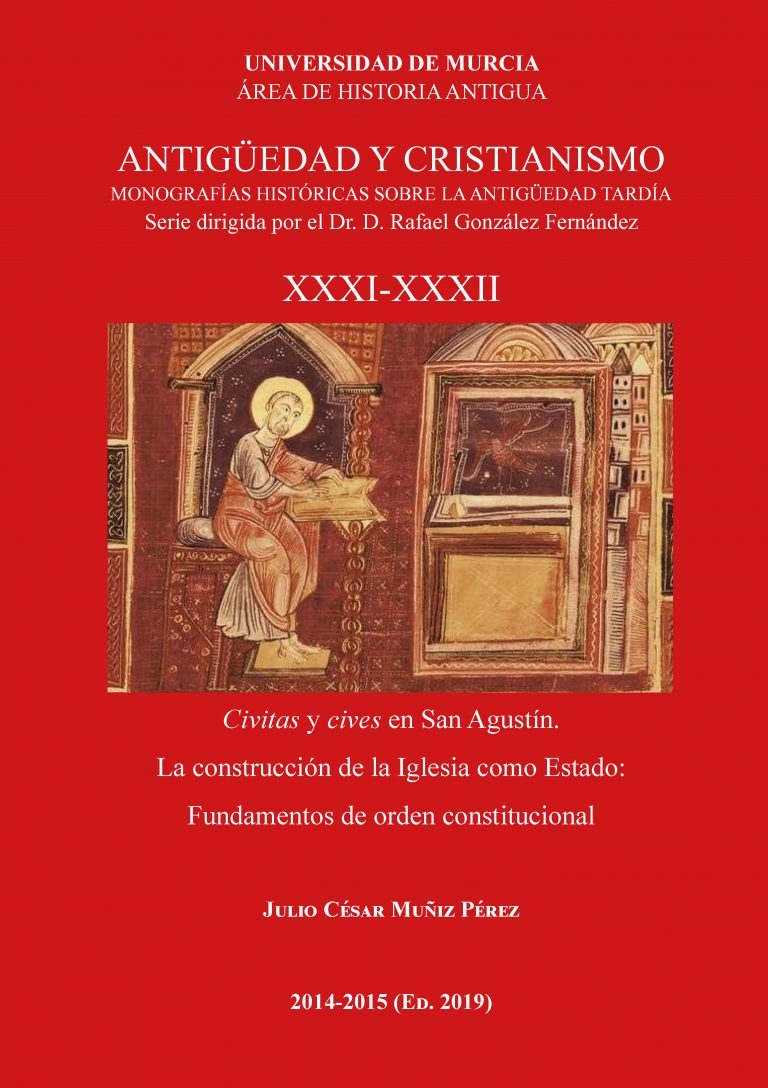No. 31-32 (2015): Civitas and cives in San Agustín. The construction of the Church as a State: Foundations of constitutional order
Antigüedad y Cristianismo
In the next lines we come to extract an analysis that fundamentally starts from a conceptual history methodology that implies, as Koselleck (1983, 15) pointed out, the study of the formation of concepts, their use and their changes. We are, therefore, in the field of conceptual history or Begriff sgeschicte, which involves facing the genesis and conceptual logic to analyze changes in ideas and value systems. Placing ourselves chronologically in the late empire, this methodology seems particularly useful to face the multiple mutations that occur in the period. In our case we limit ourselves to the conceptual delimitation of the use of certain concepts considered key in Saint Augustine, justified both in the later importance of the Saint and by his systematic and neat character in the use of language. However, we must point out that we are aware of the main criticism attributed to conceptual history, that is, the difficult comparison of modern concepts (as is the case of the concept of the State, whose birth we find with Machiavelli in the 16th century) to realities. very diverse concepts. However, we maintain that such a comparison is possible, obviously mutatis mutandis, although its specific foundation would require other monographic research on the subject. Let's say that when Augustine uses one term and not another, he does so with full awareness of it.





















